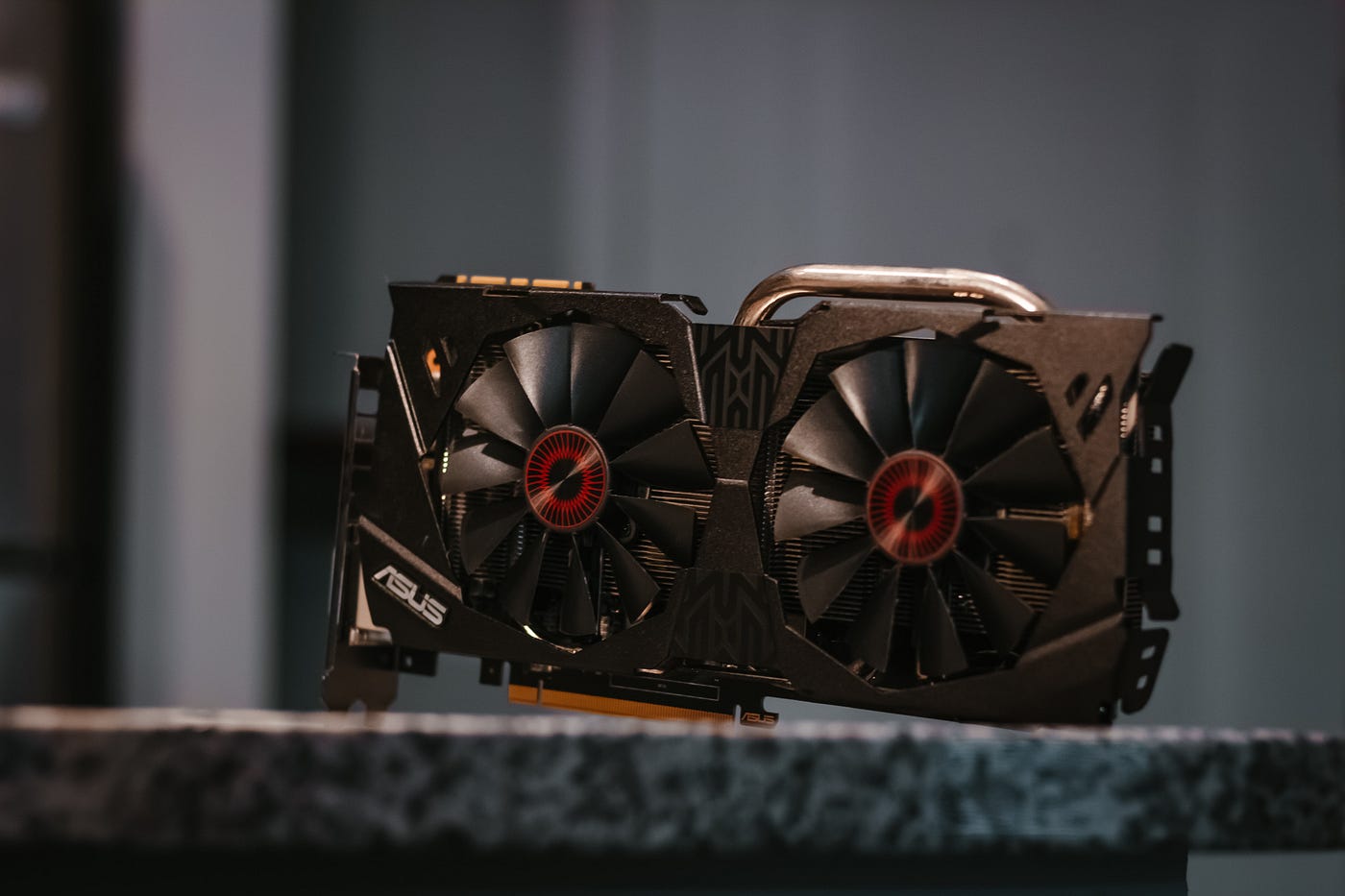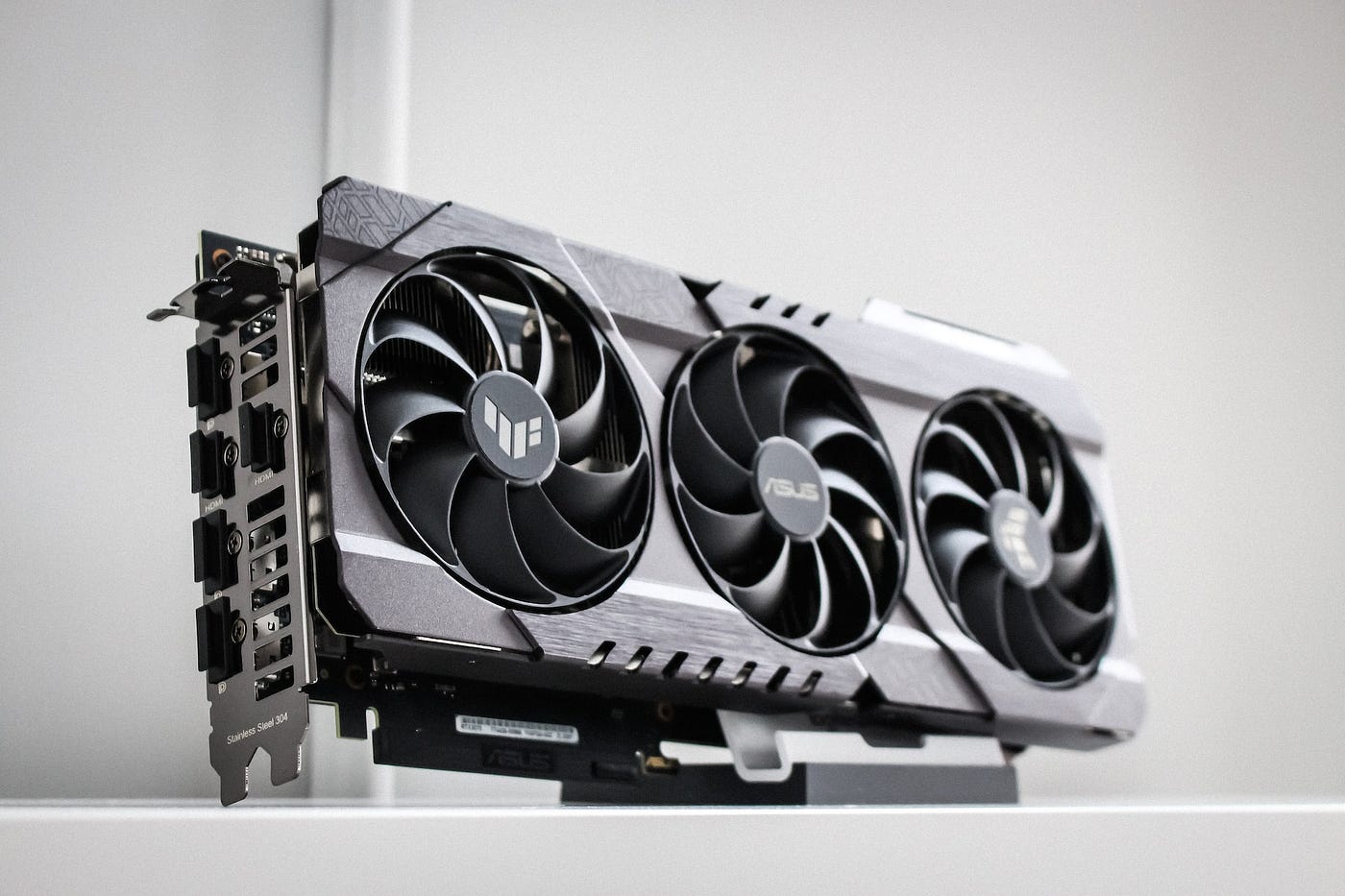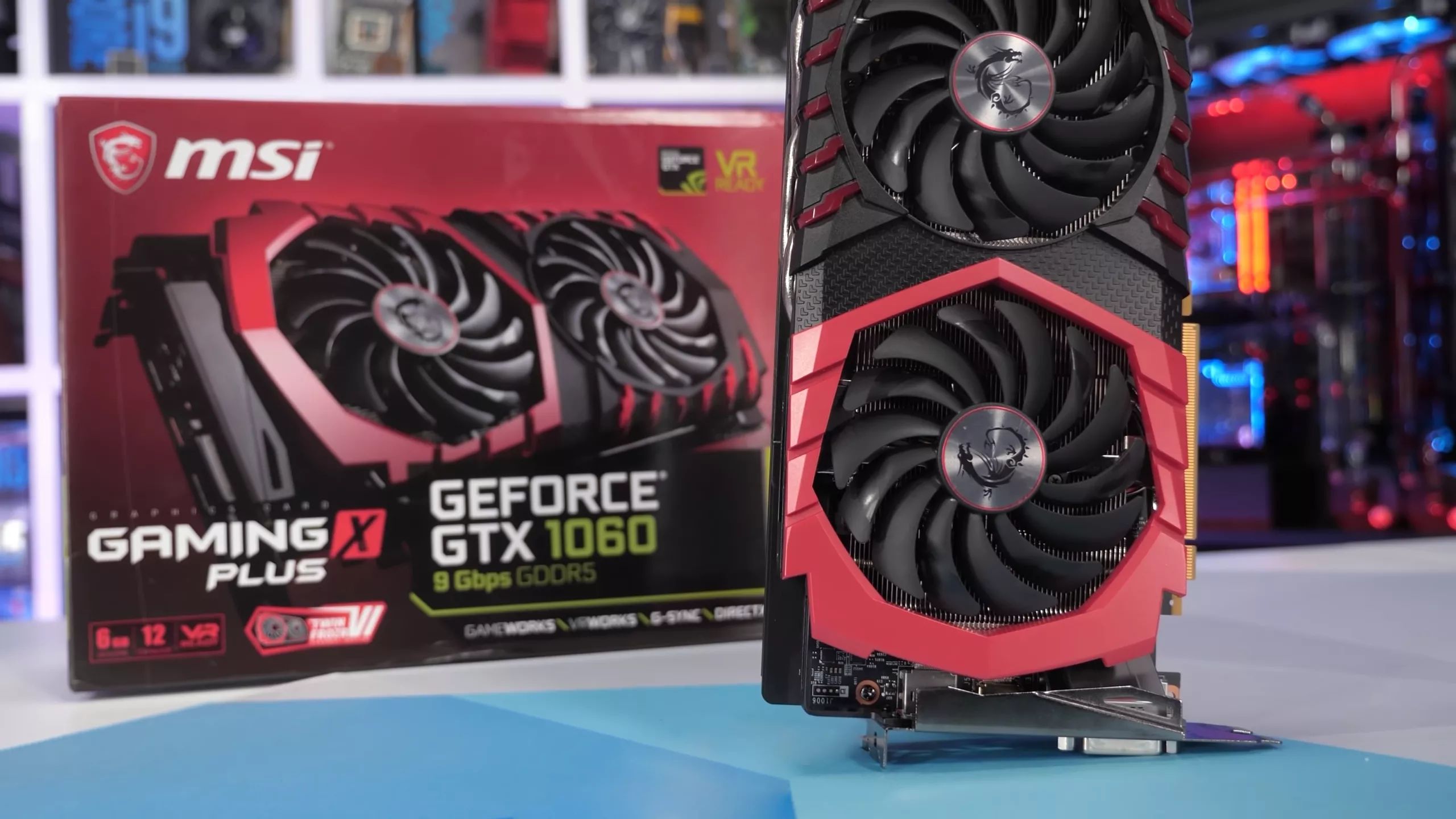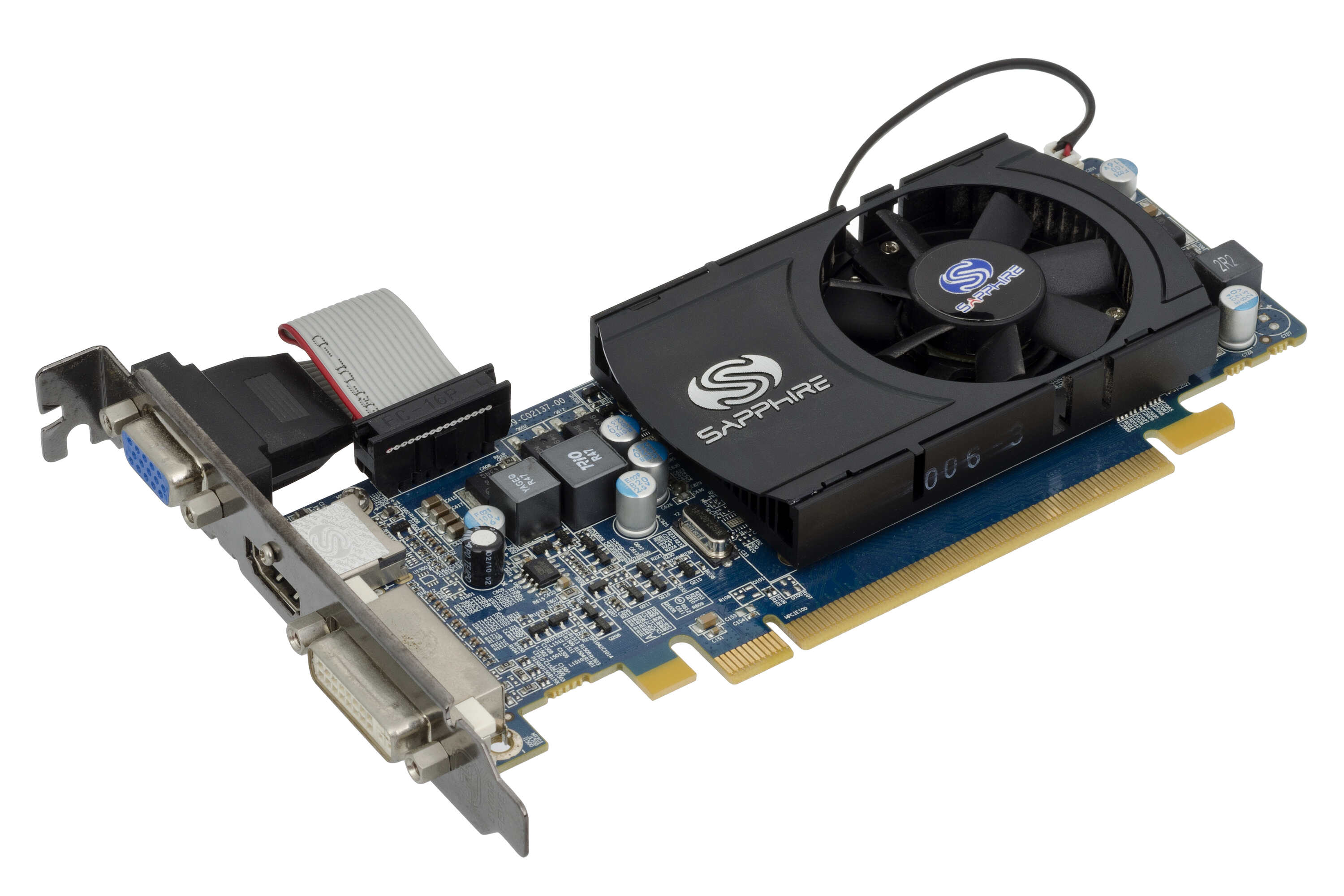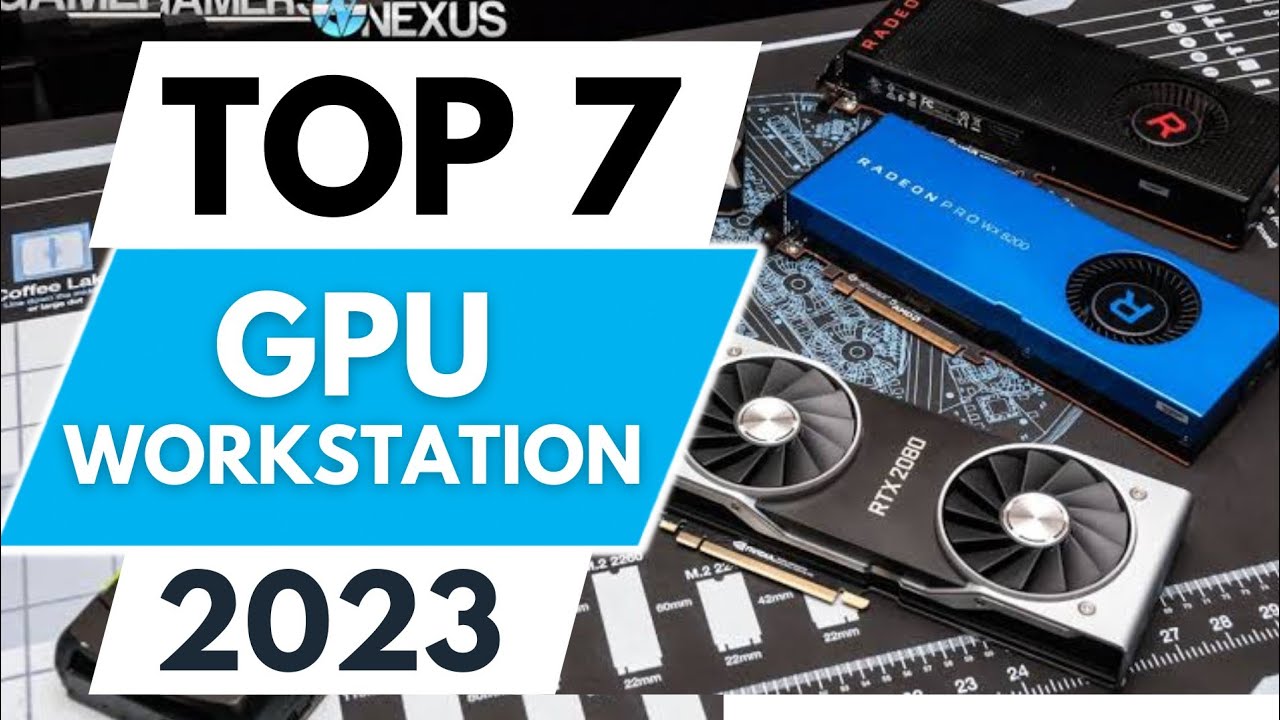Introduction
The field of computer graphics has evolved rapidly over the years, and one crucial component that makes it possible is the graphics card. Graphics cards are responsible for rendering and displaying visual information on computer monitors, enabling smooth and immersive user experiences in applications, games, and multimedia.
One type of graphics card that has gained significant popularity and adoption in recent years is the GDDR5 (Graphics Double Data Rate 5) graphics card. GDDR5 is a type of memory technology specifically designed for graphics processing units (GPUs) to enhance performance and improve overall graphics capabilities.
In this article, we will delve into the world of GDDR5 graphics cards, exploring their features, advantages, and disadvantages. Additionally, we will compare GDDR5 with its successor, GDDR6, to understand the advancements in graphics card technology.
So, if you are curious about what makes GDDR5 graphics cards a popular choice among gamers, content creators, and professionals alike, read on to discover the intricacies of this powerful hardware component.
What is GDDR5 Graphics Card?
GDDR5 (Graphics Double Data Rate 5) is a high-performance memory technology specifically designed for graphics processing units (GPUs) found in graphics cards. This type of memory is optimized to handle large amounts of graphical data and delivers impressive speed and bandwidth capabilities.
GDDR5 was introduced as an improvement over its predecessor, GDDR4, bringing significant advancements in terms of performance and power efficiency. It is commonly used in gaming PCs, high-end workstations, and graphic-intensive applications.
One key feature of GDDR5 is its ability to transfer data on both the rising and falling edges of the clock signal, effectively doubling the data transferred per clock cycle compared to previous GDDR iterations. This results in faster data transfer rates, which translates into enhanced graphics performance.
GDDR5 graphics cards typically come with different configurations in terms of memory capacity, clock speeds, and memory bus width. These variables determine the overall performance and capability of the graphics card. Higher memory capacity and wider memory bus width allow for faster data access, while higher clock speeds result in quicker data transfers.
Furthermore, GDDR5 memory operates at lower voltages compared to previous memory technologies, enabling more power-efficient graphics card designs. This not only reduces power consumption but also helps in managing heat generation, contributing to a cooler and more stable system overall.
One important aspect of GDDR5 graphics cards is their compatibility with various display technologies. They support multiple monitors and can handle high-resolution displays, making them suitable for both gaming and professional applications where rich visuals and detailed graphics are essential.
In terms of compatibility, GDDR5 graphics cards are widely supported by operating systems and gaming platforms, ensuring a seamless and hassle-free experience for users. They are compatible with both Windows and macOS systems and can be used in conjunction with popular gaming platforms such as Steam and Epic Games Store.
Overall, GDDR5 graphics cards offer exceptional performance, high memory bandwidth, power efficiency, and compatibility, making them an attractive choice for gamers, content creators, and professionals who require superior graphics capabilities.
Features of GDDR5 Graphics Card
GDDR5 (Graphics Double Data Rate 5) graphics cards come packed with a range of features that make them a popular choice among gamers, content creators, and professionals in need of powerful graphics performance. Let’s explore some of the key features of GDDR5 graphics cards:
1. High Memory Bandwidth: GDDR5 memory technology offers a high memory bandwidth, which allows for faster data transfer between the graphics card and the GPU. This translates to improved performance and smoother gameplay, especially in graphics-intensive applications.
2. Faster Data Transfer Speeds: GDDR5 graphics cards have higher data transfer rates compared to previous memory technologies. With a wider memory bus and increased clock speeds, GDDR5 memory can handle large amounts of data more efficiently, resulting in faster rendering and improved graphics performance.
3. Multiple Monitor Support: GDDR5 graphics cards are capable of supporting multiple monitors simultaneously. This feature is particularly useful for professionals who require a multi-display setup for tasks such as video editing, 3D modeling, and data analysis. Gamers can also enjoy an immersive gaming experience across multiple monitors.
4. High-Resolution Display Support: GDDR5 graphics cards can handle high-resolution displays, such as 4K and even 8K resolutions. This capability allows for stunning visuals and a more immersive gaming or viewing experience. It is especially beneficial for professional applications that demand precise and detailed graphics rendering.
5. Power Efficiency: GDDR5 memory operates at lower voltages compared to previous memory technologies, making GDDR5 graphics cards more power-efficient. This not only contributes to reduced power consumption but also helps in managing heat generation, leading to better overall system stability.
6. Wide Compatibility: GDDR5 graphics cards are widely compatible with various operating systems and gaming platforms. Whether you are using Windows or macOS, GDDR5 graphics cards can seamlessly integrate with your system. They are also compatible with popular gaming platforms like Steam and the Epic Games Store, providing a smooth gaming experience.
7. Overclocking Potential: Many GDDR5 graphics cards come with built-in overclocking capabilities. Overclocking allows users to increase the clock speeds of the GPU and memory, pushing the performance of the graphics card even further. This feature is especially attractive to gaming enthusiasts who seek every bit of performance they can achieve.
GDDR5 graphics cards offer an impressive range of features that cater to the demands of modern gaming, content creation, and professional applications. With high memory bandwidth, faster data transfer speeds, broad compatibility, and support for high-resolution displays, GDDR5 graphics cards deliver outstanding graphics performance and a superior user experience.
Advantages of GDDR5 Graphics Card
GDDR5 (Graphics Double Data Rate 5) graphics cards offer several advantages that make them a popular choice for gamers, content creators, and professionals in need of high-performance graphics capabilities. Let’s delve into some of the key advantages of GDDR5 graphics cards:
1. Enhanced Graphics Performance: GDDR5 memory technology provides a high memory bandwidth, enabling faster data transfer between the graphics card and the GPU. This results in improved graphics performance, smoother gameplay, and faster rendering in graphics-intensive applications.
2. High Memory Capacity: GDDR5 graphics cards are available in various configurations, offering different memory capacities to suit different needs. With higher memory capacity options, users can load and manipulate larger textures and graphical assets, resulting in more detailed and visually stunning graphics.
3. Compatibility with High-Resolution Displays: GDDR5 graphics cards are capable of supporting high-resolution displays, including 4K and even 8K resolutions. This compatibility allows for incredibly sharp and immersive visuals, enhancing the gaming and viewing experience for users.
4. Multi-Monitor Support: GDDR5 graphics cards are designed to support multiple monitors simultaneously. This feature is particularly beneficial for professionals who require a multi-display setup for tasks such as video editing, 3D modeling, multitasking, and data analysis. Gamers can also enjoy an immersive gaming experience across multiple monitors.
5. Power Efficiency: GDDR5 memory operates at lower voltages compared to previous memory technologies, resulting in improved power efficiency. This not only helps in reducing power consumption but also aids in managing heat generation, leading to better overall system stability and reliability.
6. Compatibility and Broad Support: GDDR5 graphics cards have widespread compatibility with various operating systems, including Windows and macOS, making them suitable for a wide range of users. Additionally, they are well-supported by popular gaming platforms and software applications, ensuring a seamless and hassle-free experience.
7. Overclocking Potential: Many GDDR5 graphics cards come with overclocking capabilities, allowing users to increase the clock speeds of the GPU and memory. This feature provides enthusiasts with the flexibility to push their graphics cards to their maximum potential, maximizing performance and achieving higher frame rates in demanding games.
8. Cost-Effective Option: Compared to newer memory technologies like GDDR6, GDDR5 graphics cards are typically more affordable. This makes them an attractive choice for budget-conscious consumers who still want to enjoy reliable and high-performance graphics capabilities without breaking the bank.
Overall, the advantages of GDDR5 graphics cards, including enhanced graphics performance, high memory capacity, compatibility with high-resolution displays, multi-monitor support, power efficiency, broad compatibility, overclocking potential, and cost-effectiveness, make them a preferred choice for many users seeking impressive graphics capabilities.
Disadvantages of GDDR5 Graphics Card
While GDDR5 (Graphics Double Data Rate 5) graphics cards offer numerous advantages, they also have some limitations that users should be aware of. Let’s explore the main disadvantages of GDDR5 graphics cards:
1. Lower Bandwidth compared to GDDR6: One major disadvantage of GDDR5 is its lower memory bandwidth when compared to the newer GDDR6 memory technology. GDDR5 graphics cards may struggle to keep up with the demands of the most graphics-intensive games and applications, resulting in lower overall performance.
2. Limited Future-proofing: As newer memory technologies continue to advance, GDDR5 graphics cards may become outdated more quickly. This can impact their longevity and compatibility with upcoming games and software releases, as developers increasingly optimize for newer memory technologies.
3. Limited Memory Capacity: While GDDR5 graphics cards offer different memory capacity options, they typically have lower maximum memory capacities compared to their GDDR6 counterparts. This limitation can impact the ability to load and manipulate extremely large textures or work with complex 3D models.
4. Higher Power Consumption: Although GDDR5 memory operates at lower voltages than previous memory technologies, it is generally less power-efficient compared to newer memory technologies like GDDR6. This can result in increased power consumption and potentially higher electricity bills for users.
5. Heat Generation: GDDR5 graphics cards tend to produce more heat compared to newer memory technologies. This can lead to increased temperatures inside the computer case, potentially necessitating additional cooling solutions to maintain optimal performance and prevent overheating.
6. Lower Overclocking Potential: While GDDR5 graphics cards generally have overclocking capabilities, they may not be able to achieve the same levels of overclocking performance as newer graphics cards with advanced memory technologies. This can limit the ability to squeeze out maximum performance from the graphics card.
7. Decreased Availability: With the advent of newer memory technologies, the availability of GDDR5 graphics cards may decline over time. This can make it more challenging to find GDDR5 graphics cards in the market, especially if you are specifically looking for the latest models or specific configurations.
It is important to note that the disadvantages of GDDR5 graphics cards should be considered in the context of individual needs and requirements. While they may have some limitations, GDDR5 graphics cards still offer solid performance and are a viable option for many users, especially those on a budget or with moderate graphics processing needs.
GDDR5 vs GDDR6 Graphics Card: Comparison
When it comes to graphics card memory technology, GDDR5 (Graphics Double Data Rate 5) and GDDR6 (Graphics Double Data Rate 6) are two commonly used options. Let’s compare GDDR5 and GDDR6 to understand their differences and determine which one might be the better choice for your needs.
1. Memory Bandwidth: One of the key differences between GDDR5 and GDDR6 is the memory bandwidth. GDDR6 offers significantly higher memory bandwidth compared to GDDR5. This means that GDDR6 can handle larger amounts of data at faster speeds, resulting in improved graphics performance and smoother gameplay.
2. Speed and Data Rates: GDDR6 operates at higher clock speeds compared to GDDR5. This allows for faster data transfer rates and improved overall performance. GDDR6’s higher data rates are particularly beneficial for processing graphically demanding tasks, such as rendering high-resolution textures or running complex simulations.
3. Memory Capacity: GDDR5 and GDDR6 graphics cards come in various memory capacity configurations. However, GDDR6 generally offers higher maximum memory capacities compared to GDDR5. This is advantageous for users who work with large datasets or require extensive memory for rendering advanced graphics.
4. Power Efficiency: GDDR6 is more power-efficient than GDDR5. The newer memory technology operates at lower voltages, resulting in reduced power consumption and heat generation. This not only helps in maintaining system stability but also contributes to a more energy-efficient setup, potentially leading to lower electricity costs over time.
5. Cost: Due to its newer technology and improved performance, GDDR6 graphics cards tend to be more expensive than their GDDR5 counterparts. The higher cost of GDDR6 is attributable to the advanced manufacturing processes and optimizations implemented in its design. However, as GDDR6 becomes more prevalent, prices are likely to become more competitive.
6. Future-Proofing: GDDR5 is an older memory technology, whereas GDDR6 is the newer standard. As game developers and software companies continue to push the boundaries of graphics and performance, they are likely to optimize their products for the more advanced GDDR6 memory technology. This means that GDDR6 graphics cards may offer better compatibility with future games and applications.
In summary, GDDR6 graphics cards outperform GDDR5 in terms of memory bandwidth, speed, and power efficiency. They also offer higher maximum memory capacities, which are beneficial for users who require extensive memory for their tasks. However, GDDR6 graphics cards tend to come at a higher cost.
Ultimately, the choice between GDDR5 and GDDR6 depends on your specific needs, budget, and how future-proof you want your graphics card to be. If you require top-of-the-line performance, future compatibility, and are willing to invest in the latest technology, GDDR6 may be the better option. However, if you have budget constraints or do not need the absolute maximum performance, GDDR5 can still provide solid graphics capabilities.
Conclusion
In conclusion, GDDR5 (Graphics Double Data Rate 5) graphics cards have established themselves as a popular choice for gamers, content creators, and professionals seeking high-performance graphics capabilities. With their impressive memory bandwidth, faster data transfer speeds, multi-monitor support, and compatibility with high-resolution displays, GDDR5 graphics cards deliver exceptional graphics performance and an immersive user experience.
While GDDR5 graphics cards offer numerous advantages, such as high memory capacity, power efficiency, and broad compatibility, they do come with a few limitations. Compared to the newer GDDR6 memory technology, GDDR5 graphics cards have lower memory bandwidth, limited future-proofing capabilities, and may consume more power. However, these disadvantages should be considered in light of individual needs and budget constraints.
When comparing GDDR5 and GDDR6, it’s clear that GDDR6 offers superior performance with higher memory bandwidth and clock speeds. Additionally, GDDR6 graphics cards tend to have higher memory capacities and better power efficiency. However, GDDR6 graphics cards also come at a higher price point.
Ultimately, the choice between GDDR5 and GDDR6 depends on your specific requirements, budget, and how future-proof you want your graphics card to be. If you prioritize top-of-the-line performance, future compatibility, and are willing to invest in the latest technology, GDDR6 is the way to go. On the other hand, if you have budget constraints or do not need the absolute maximum performance, GDDR5 graphics cards still provide solid graphics capabilities for a more affordable price.
In summary, GDDR5 graphics cards have played a pivotal role in delivering impressive graphics performance over the years. They have proven to be reliable and capable options for a wide range of users. Whether you are a passionate gamer, a content creator, or a professional in need of powerful graphics processing, GDDR5 graphics cards can provide the performance and visual fidelity you desire.







